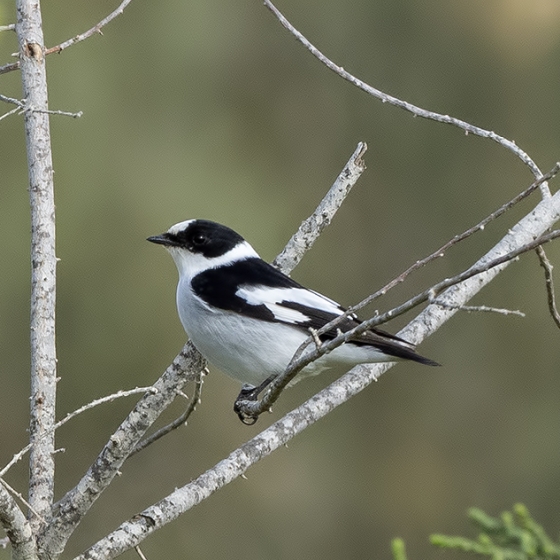Collared Flycatcher

Introduction
Closely resembling a Pied Flycatcher, Collared Flycatcher is a less than annual visitor.
Almost all of the records relate to spring individuals – typically May or the first week of June – and are thought to be the result of birds from the western end of the breeding range overshooting their breeding grounds.

Key Stats
Status and Trends
Conservation Status
Population Size
Population Change
Population trends of this scarce species are not routinely monitored.
Distribution
This species is a rare vagrant and was recorded during Bird Atlas 2007–11 as shown on the map.
or view it on Bird Atlas Mapstore.
European Distribution Map
Distribution Change
This vagrant is too rarely reported to map distribution change.
Seasonality
This species has been too rarely reported to BirdTrack during 2011–22 to properly assess seasonality.
Movement
Britain & Ireland movement
European movements
EuroBirdPortal uses birdwatcher's records, such as those logged in BirdTrack to map the flows of birds as they arrive and depart Europe. See maps for this species here.
The Eurasian-African Migration Atlas shows movements of individual birds ringed or recovered in Europe. See maps for this species here.
Biology
Survival and Longevity
Survival is shown as the proportion of birds surviving from one year to the next and is derived from bird ringing data. It can also be used to estimate how long birds typically live.
Classification, names and codes
Classification and Codes
- Order: Passeriformes
- Family: Muscicapidae
- Scientific name: Ficedula albicollis
- Authority: Temminck, 1815
- BTO 5-letter code: COLFL
- Euring code number: 13480
Alternate species names
- Catalan: papamosques de collar
- Czech: lejsek belokrký
- Danish: Hvidhalset Fluesnapper
- Dutch: Withalsvliegenvanger
- Estonian: kaelus-kärbsenäpp
- Finnish: sepelsieppo
- French: Gobemouche à collier
- German: Halsbandschnäpper
- Hungarian: örvös légykapó
- Icelandic: Trafgrípur
- Italian: Balia dal collare
- Latvian: baltkakla muškerajs
- Lithuanian: baltakakle margoji musinuke
- Norwegian: Halsbåndfluesnapper
- Polish: mucholówka bialoszyja
- Portuguese: papa-moscas-de-colar
- Slovak: muchárik bielokrký
- Slovenian: belovrati muhar
- Spanish: Papamoscas acollarado
- Swedish: halsbandsflugsnappare
- Welsh: Gwybedog Torchog
More Evidence
More evidence from Conservation Evidence.com
Partners
Citing BirdFacts
If you wish to cite particular content in this page (e.g. a specific value) it is best to use the original sources as linked in the page. For a more general citation of the whole page please use: BTO (20XX) BirdFacts Species: profiles of birds occurring in the United Kingdom. BTO, Thetford (www.bto.org/birdfacts, accessed on xx/xx/xxxx).

